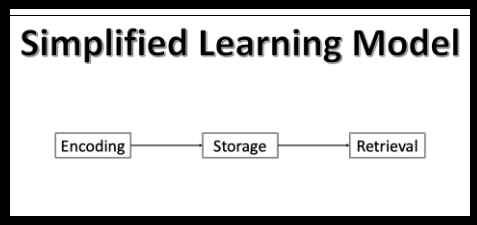Are you looking for the Classworks Special Education program from TouchMath? Click here to go to their site.
Are you looking for the Classworks Special Education program from TouchMath? Click here to go to their site.
It’s easy to think that personalized learning means a private Zoom session with the Teacher. But we all know it means so much more. In this article, veteran Educator and author Aaron Daffern helps us understand that truly effective digital worksheets and other activities offer opportunities for personalized learning in that students internalize their own learning– thereby making it stick because it’s personalized to them.
What does “effective” mean in the context of a worksheet? On its own, the word “effective” means to produce a desired result. In the classroom, most activities focus on the application of a skill or standard and are deemed effective if there’s an objective demonstration of mastery. But if we look deeper at how students learn, we can start to understand that there’s more to making an effective worksheet, especially with digital tools like Classwork.com to assist.

Aaron Daffern. Life Long Educator and Author, “Worksheets Don’t Work.”
According to Agarwal and Bain (2019), learning is composed of three stages: Encoding, Storage, and Retrieval as illustrated by their Simplified Learning Model diagram shown here.
As they write in their book, “Encoding is when we get information in and absorb knowledge, almost like a sponge. Storage is where we hope that once we encode information, our knowledge sticks around. Retrieval is when we reach back and bring something we previously learned to mind.” (For more information, see Powerful Teaching: Unleash the Science of Learning Agarwal and Bain, 2019)

Aaron Daffern, a career educator working at Dallas ISD in Texas, has built a framework focused on encoding. As a current Math Director and previous Early Learning Manager, Teacher, Principal, and District Curriculum Coordinator, Daffern has dedicated his career to helping other Educators improve their work in the classroom. He is very focused on techniques for personalized learning. His model is called ‘ELABORATE’ and is used to improve the encoding of information for students; encoding is the first step in the Simplified Learning Model.
Daffern argues that encoding is the primary factor in a student’s education. When done effectively, students receive, engage, and relate to knowledge, thereby storing it so that it’s quickly retrieved. Encoding is extremely important to our students’ retention of learning and yet it is often inhibited by worksheets and other types of learning activities. Too frequently, students are asked to follow a pattern or a series of steps rather than leading on their own path towards an answer. Retrojection of prior learning and the necessary personal connections to foster encoding are absent from traditional worksheets– those often referred to as “drill and kill.”
Daffern’s 2020 book titled “Worksheets Don’t Work” takes aim at drill and kill activities. He asserts that allowing students to create their own path forces them to connect more profoundly with the learning task. He claims that most current worksheets are not promoting deep thinking because they are “expedient but not efficient.” When students take ownership of an activity, they link new learning to existing learning. Doing so is much more efficient because it improves a student’s ability to remember that knowledge in the future; they’ve personalized learning for themselves.
Daffern is not asking you to stop using worksheets altogether. Every veteran Teacher knows the value of expediency in the classroom. But with just a few tweaks, the effectiveness, or efficiency, of an activity can be greatly improved. It may take a little more effort when “scoring” the activity, but Daffern argues that it’s worth it. And since we’ve each experienced naming a file and storing it on our hard drive, never to find it again, Daffern’s argument rings true. By connecting prior learning to current learning and giving students ways to personalized learning paths and their responses, we’re letting them name their mental “files” in such a way that they can access them again from their “hard drives.”
Explain – Look – Associate – Build – Organize – Reflect – Analyze – Try – Extend
Since digital tools like Classwork.com (formerly TeacherMade) make it easier than ever to have students personalize their learning activities via interactive worksheets, we thought we’d put the ELABORATE model and Daffern’s approach to work using TeacherMade.
Here is the link to an activity we’ve created to illustrate parts of the ELABORATE framework. Feel free to use this worksheet with your 2nd and 3rd-grade students. (And if that’s not you, please share this article with your colleagues. 🙂
Tiered Activity 2nd/3rd Grade Poetry
This is a standard comprehension assignment that we turned into a more rigorous and personally engaging activity using the ELABORATE model:
1) The worksheet offers the students a choice of activities.
2) Students might Analyze the words of the poem for context clues.
3) Students may Organize the theme of the poem by connecting it to their own life.
4) Students can Associate the subject of the poem with prior learning from Science.
5) Students can Extend their learning by completing Activity #4.
Daffern argues that tiered activities such as this one are a great way to get students engaged because by giving them choices, they are forced to take ownership of their learning. The worksheet accomplishes the learning goal of comprehension but does so in a way that builds on the student’s prior knowledge and connects learning to their personal lives in a variety of ways, aka personalized learning.
Make your own worksheets stickier using the Elaborate model! Learn more about Aaron Daffern and his Elaborate model in his book, ‘Worksheets Don’t Work.’ Purchasing the book gives you access to 50 different worksheet alternatives that will help you strengthen your assignments. Though you can go directly to Amazon to buy the book, if you go here first you’ll get a 15% discount: https://www.aarondaffern.com/worksheets
–Happy Teaching from the Classwork.com Team!